VfL Bochum recently fired head coach Robin Dutt and signed Thomas Reis as their new head coach. Bochum’s results in the beginning of the 2 Bundesliga campaign 2019/20 have been poor and Bochum’s defensive department had some issues. However, their defensive struggles seem to maintain under their new head coach so far.
With allowing shots that resulted in the expected number of 13.01 goals, Bochum actually conceded 19 goals. Therewith, Bochum conceded way more goals (+46%) than the stats indicate. In the following tactical analysis, we will examine the reasons for Bochum’s defensive problems and explain which tactical issues caused the big difference between xGA and conceded goals.
The xG model and its pitfalls
For quantitive analysis, data analysts searched for a statistic with a high correlation to the actual result of a game. The creation of the xG model allowed for more accurate claims about a team’s performance. This model calculates the probability of a shot resulting in a goal. For each shot location, there is data about the amount of goals per attempt. With the help of this data, xG values can be created. Different from model to model, some xG values also consider whether it is a header or a shot with the strong or weak foot.
Nevertheless, xG stats do not take into account whether the player taking the shot is pressured by an opposition defender. Not a single xG model considers the distance towards the defender. This might be the reason for the huge discrepancy of Bochum’s xGA value and their actual amount of conceded goals. Bochum seem to fail to pressure the opposition attacker enough and as a consequence concede more goals than expected.
Bochum’s defending approach
In 2019/20, Bochum also conceded some goals after individual mistakes. However, we will focus more on their structural issues in the following. In order to find reasons for Bochum’s unstable defence, we need to examine Bochum’s defending approach at first.
With a PPDA value of 8.93 (that means that Bochum allow the opposition to play 8.93 passes per defensive action (duel, interception or foul) on average), they are among the sides that try to interrupt the opposition attacking play rather early than late. That also means that Bochum move up the pitch as a unit and therewith offer space behind the back line.
Bochum’s attempt to press the opposition early is not bad in general. Nevertheless, there occur some issues due to their active pressing approach. Firstly, Bochum’s offensive players are not always able to regain possession. Instead, they will often provoke long balls to be played by the opposition.
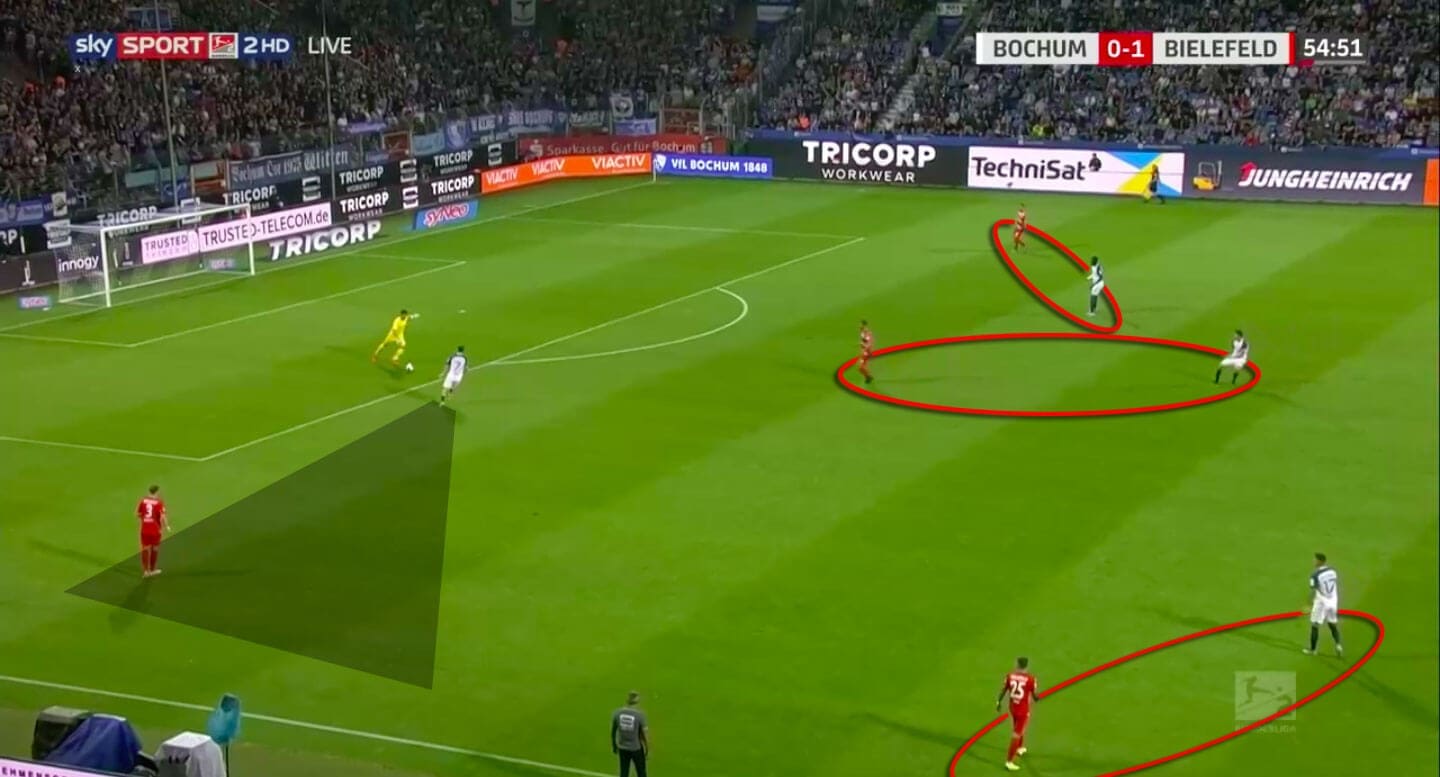
Secondly, Bochum’s defenders sometimes struggle to keep up pace with fast attackers and therewith fail to defend the space behind the last line. One reason for that is a lack of pace.
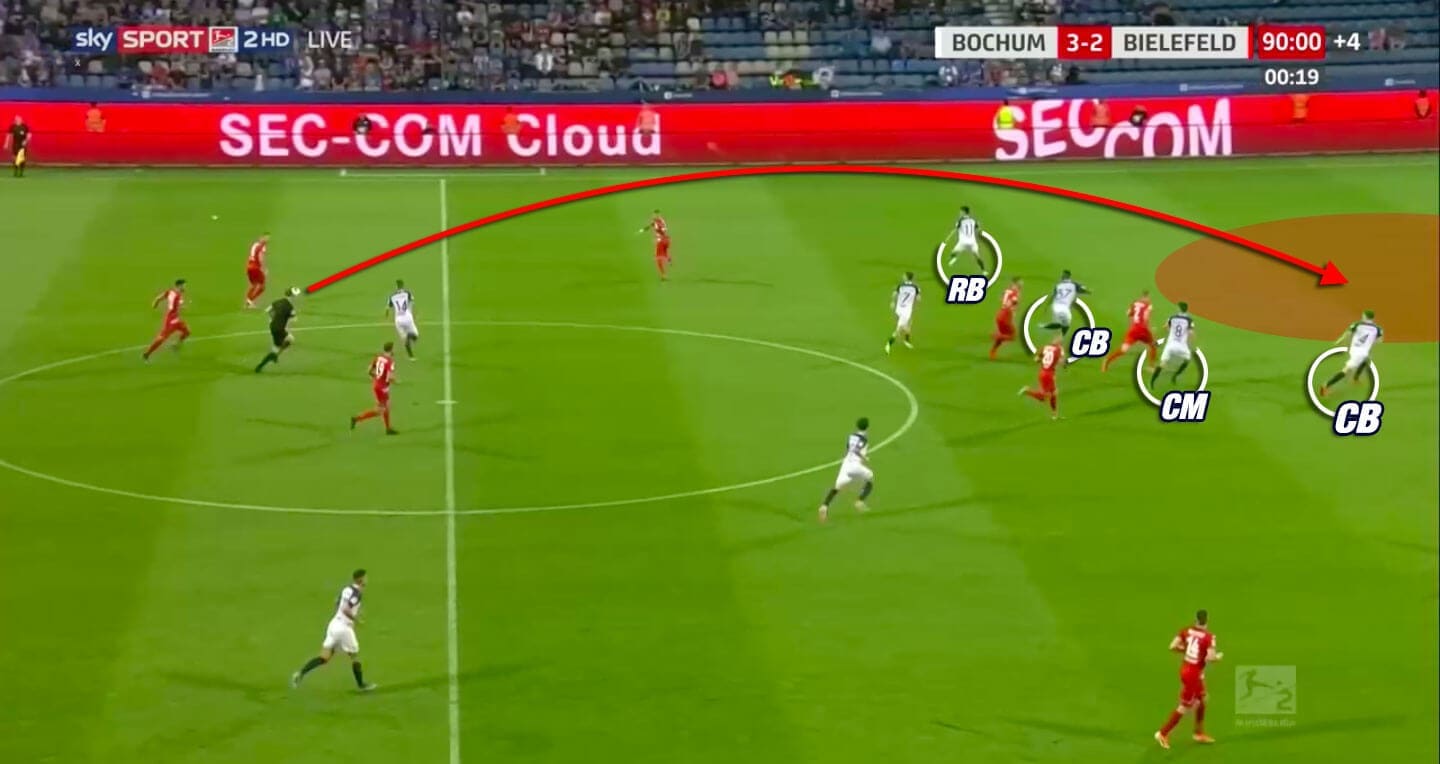
Another reason is the poor positioning of their defenders, both on an individual level and on a group tactical level. Especially when the opposition is playing long balls, it is advantageous to defend with a rather narrow back-four. This ensures that However, Bochum’s defenders are too focused on their direct opponents and often fail to switch from their man-oriented way of defending to a space-oriented way.
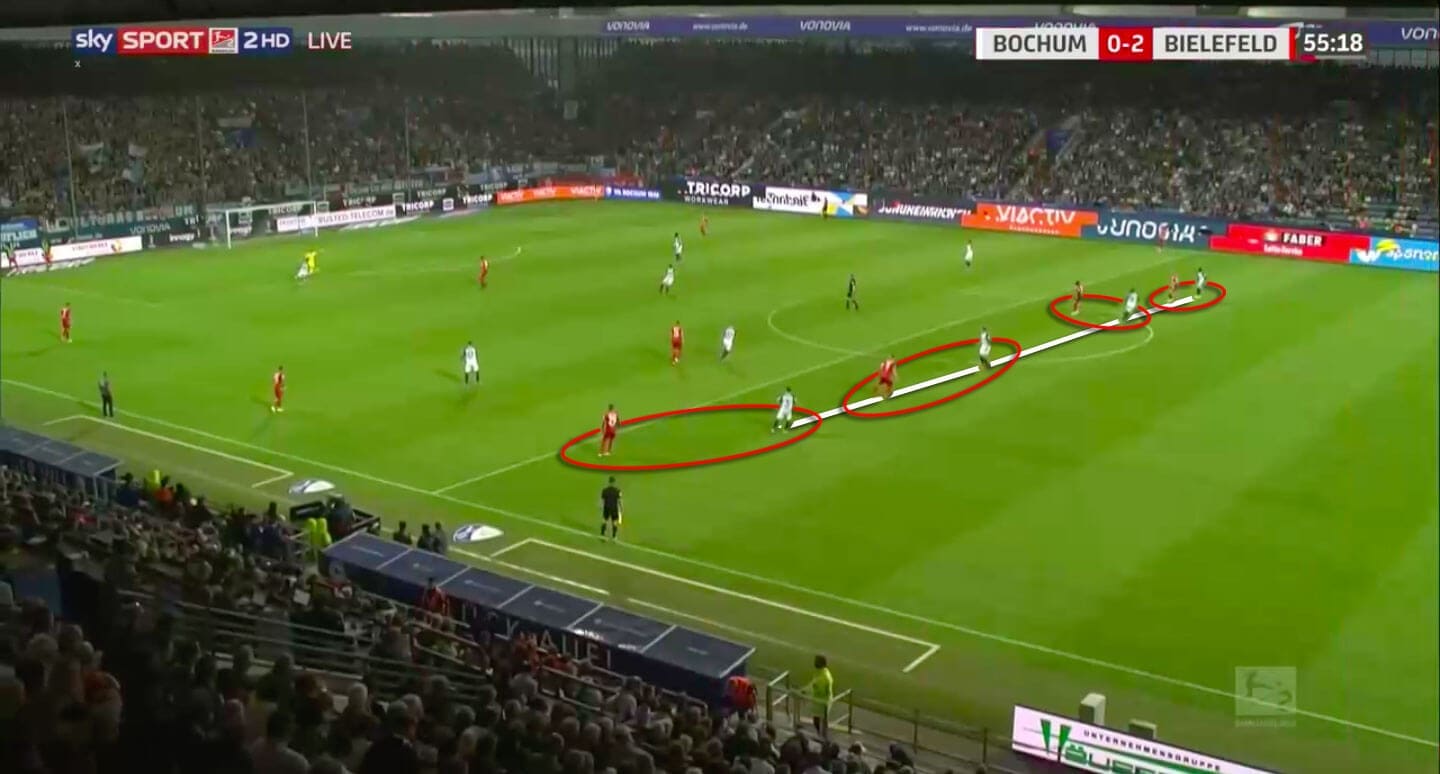
As a consequence, the back line is stretched horizontally. This is not dangerous for the first ball since the opposition cannot play through the gaps when hitting the ball long. But if the opposition attackers flick the ball on into space behind Bochum’s back-four, the distances between the defenders are often too far to cover each other.
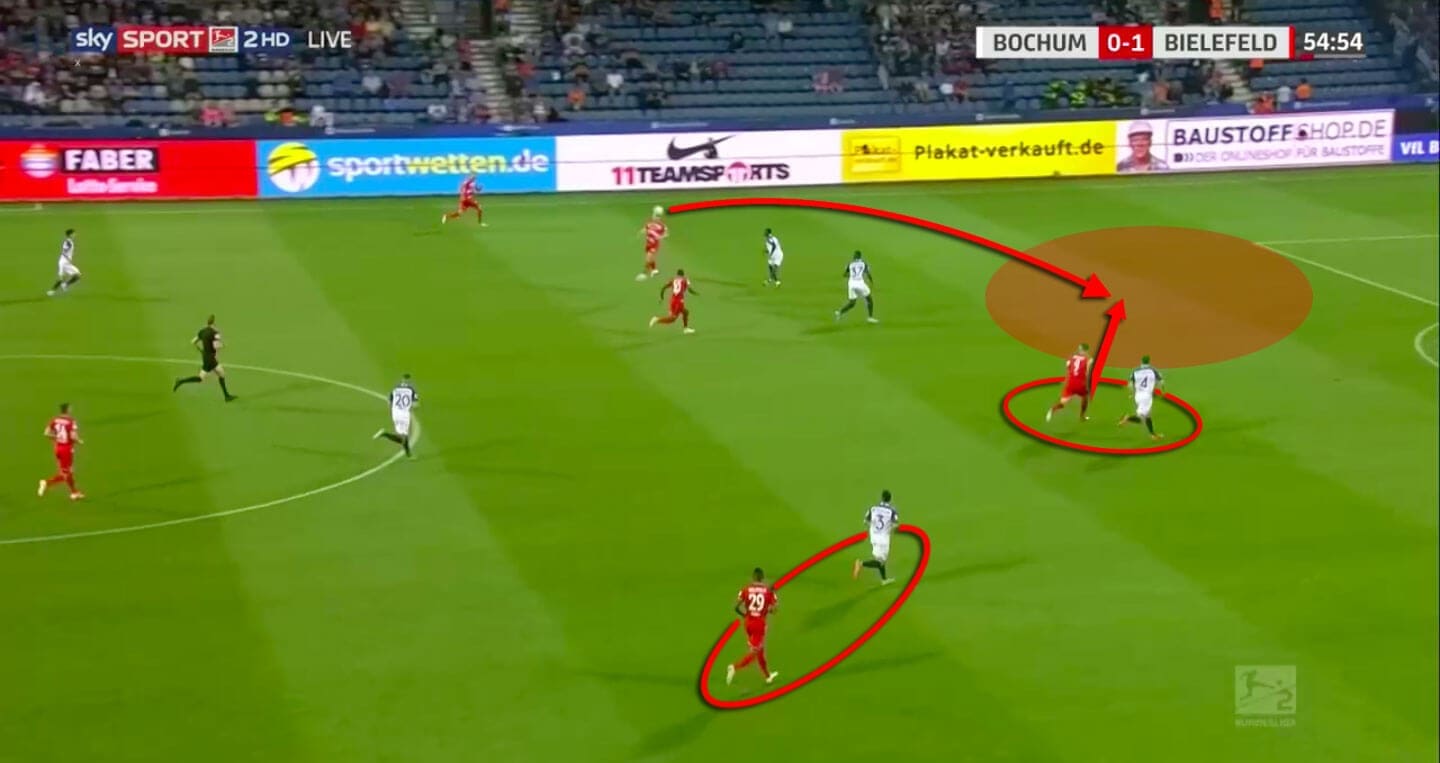
On an individual level, the body shape of Bochum’s defenders seems to be subpar as well. Instead of being in a sideways position while facing the ball, Bochum’s right-back in the example below turns his back towards the ball. As a result, he does not only lose sight of the ball, but also has a longer way to turn around once the ball is played behind the back line.
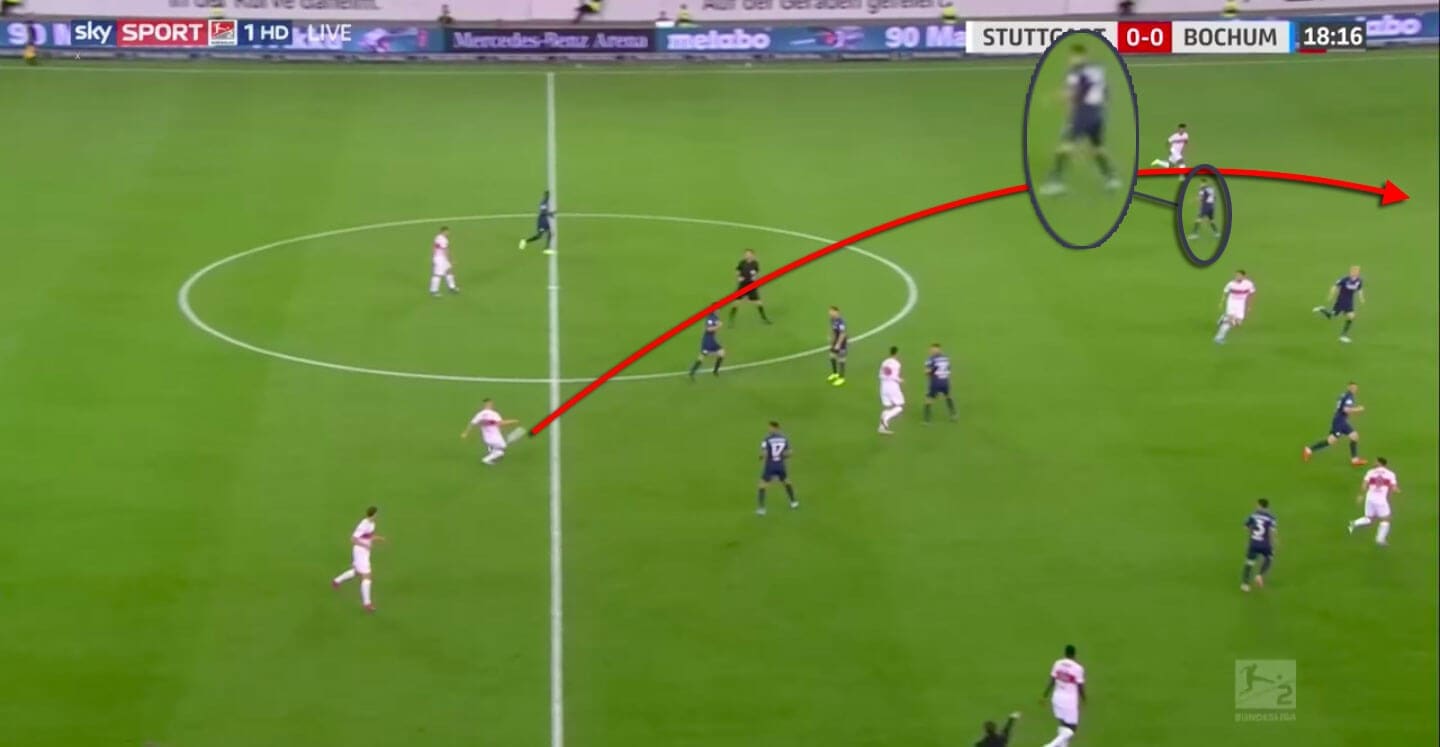
Last but not least, after being overplayed, Bochum’s midfielders need to move backwards as soon as possible to support their defensive department. Pressing high leads to the defensive shape becoming vertically stretched. The gaps that appear between the lines need to be filled immediately once the opposition progress up the pitch. But sometimes, Bochum’s midfielders react too slowly.
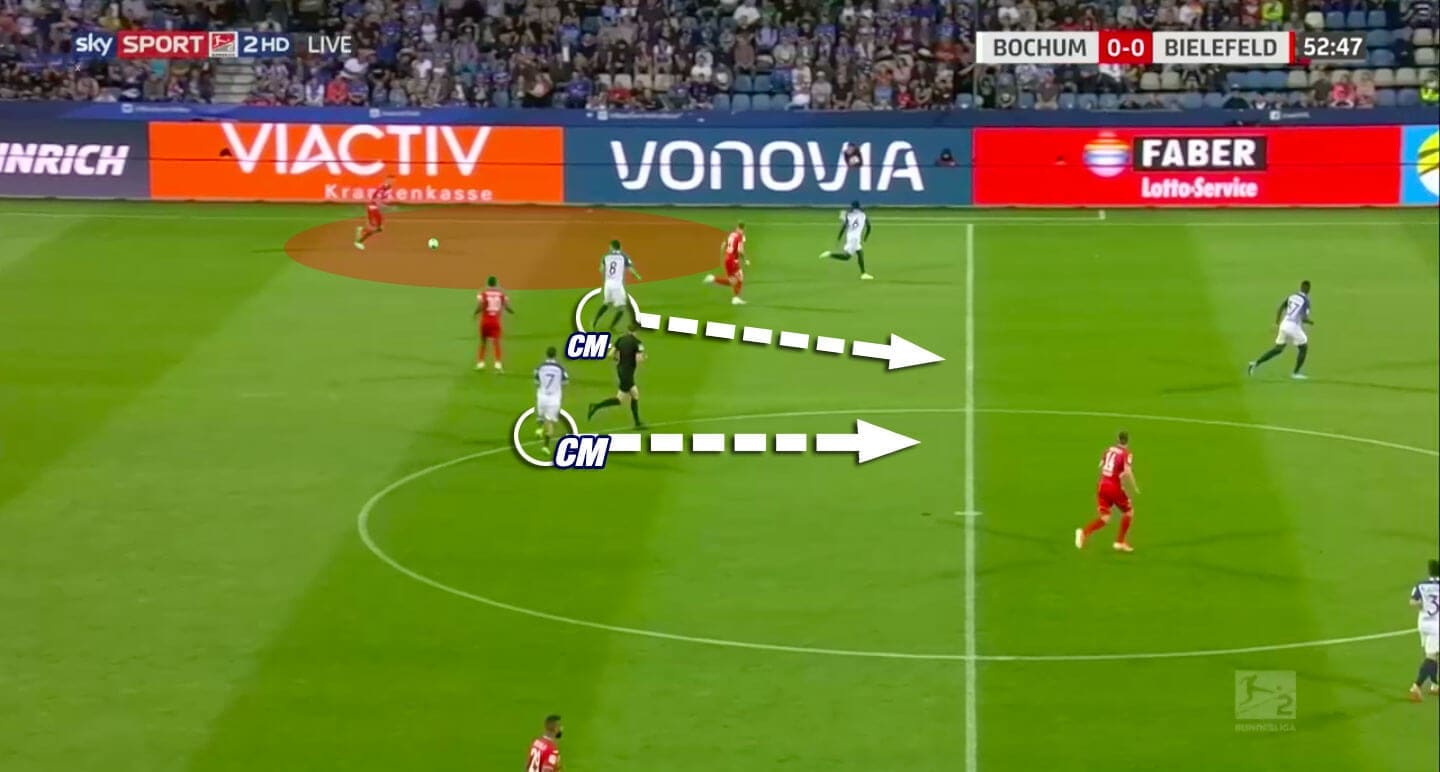
As a consequence, Bochum’s defenders need to defend their direct opponents and also beware of passes into the space in front of the back line. Sometimes they even get outnumbered.
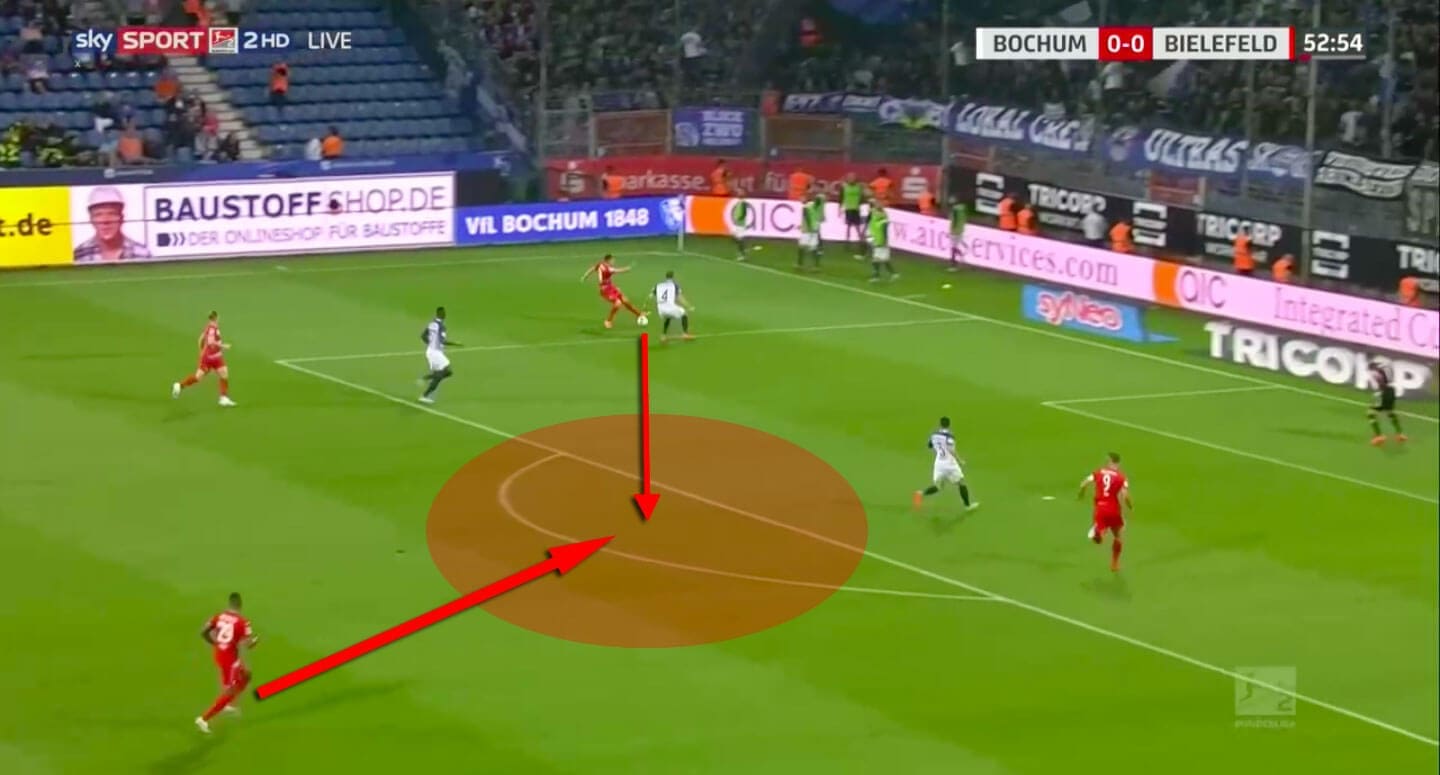
Conceding from wide attacks
When depicting the goals that Bochum conceded in the beginning of the season 2019/20, it is obvious that Bochum struggle to defend wide attacks. Dutt’s team conceded a relatively high number of goals after wing-attacks from the opposition. And what is even more worrying, this trend did not change since Reis took over the team from Bundesliga Two.
A common strategy that Bochum’s opponents successfully utilise to score are attacks down one side of the pitch to finish at the second post. That is possible since Bochum’s defensive department often heavily shifts towards the ball side.
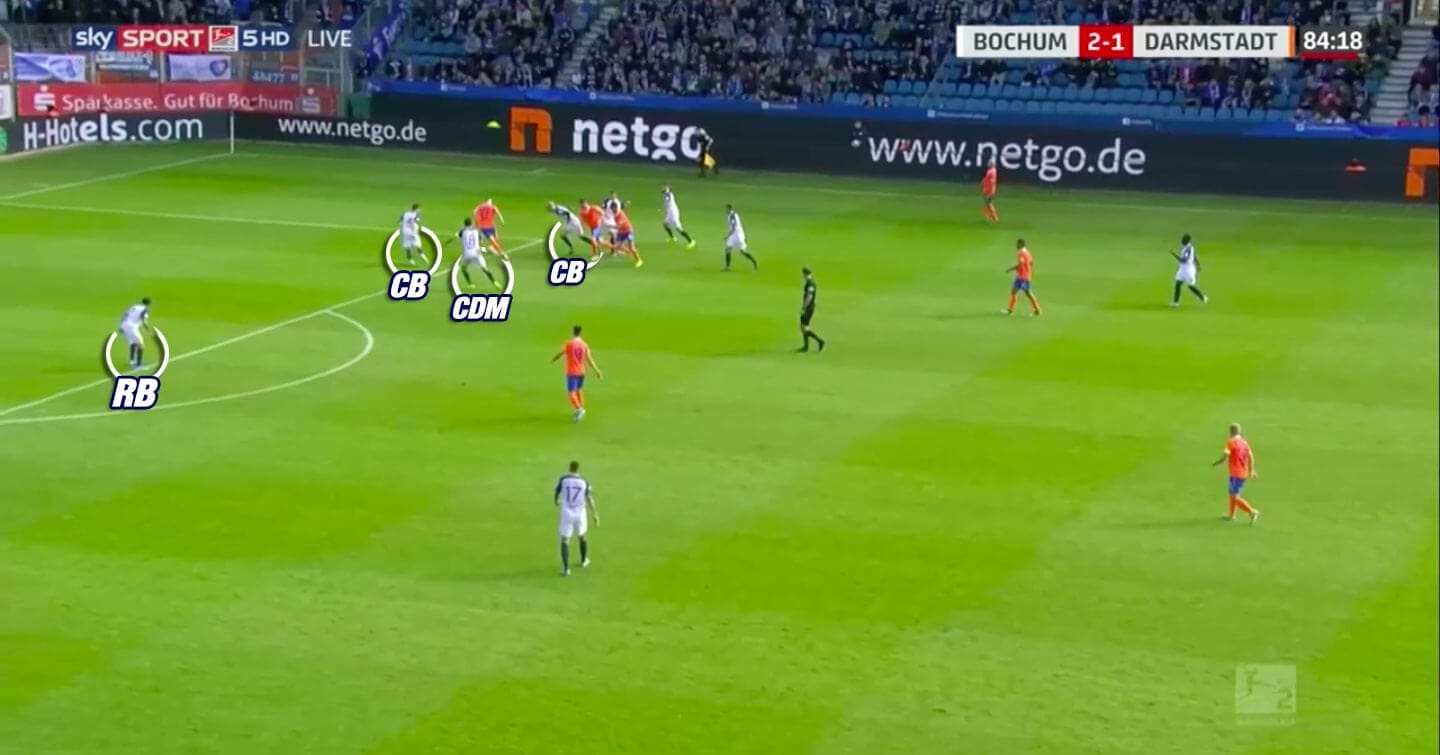
And with even both of their central defenders leaving the centre, the ball far full-back is left alone centrally.
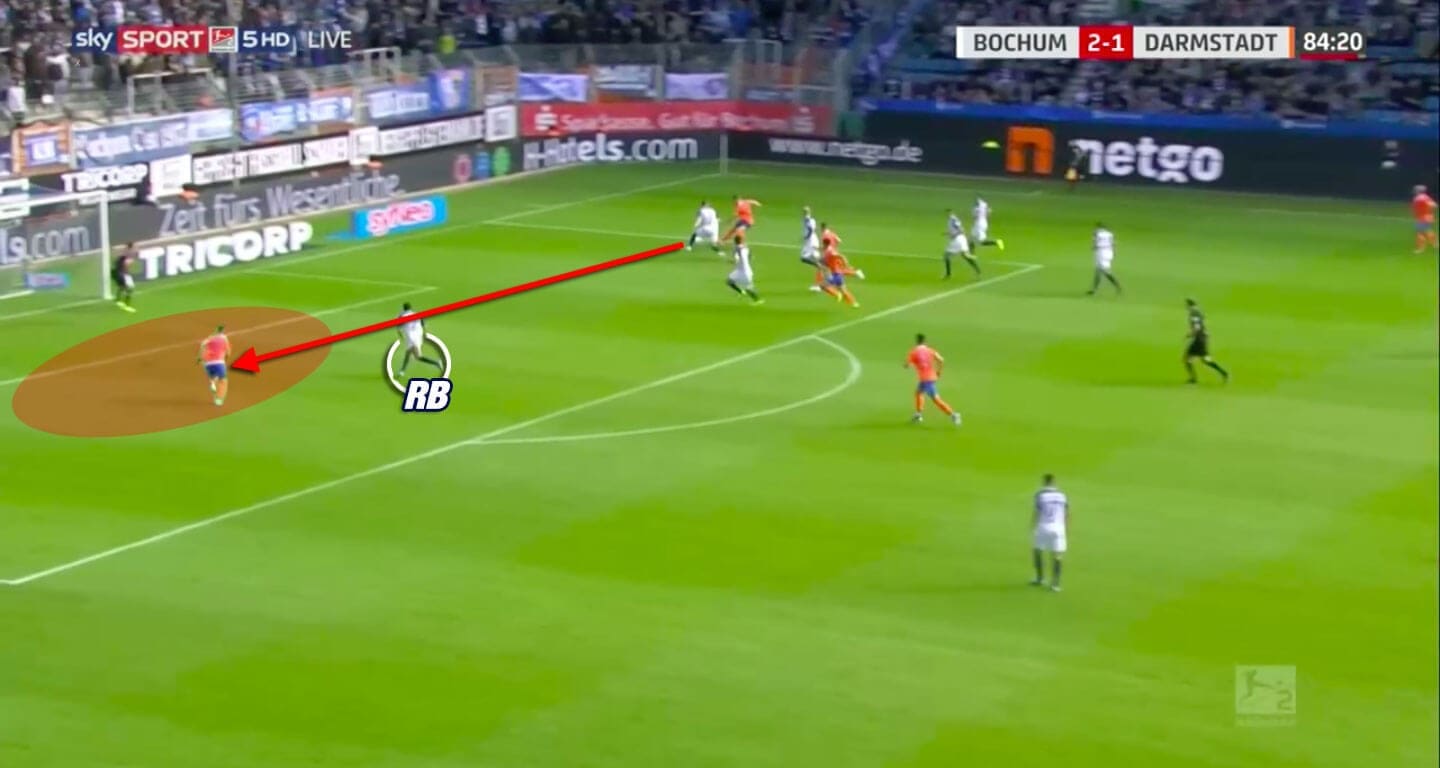
Especially the positioning of the centre-backs is crucial when defending wide attacks with a back-four. In case of possible crosses, the defenders are not supposed to defend ball-oriented anymore, but need to mark the opposition attackers within the box.
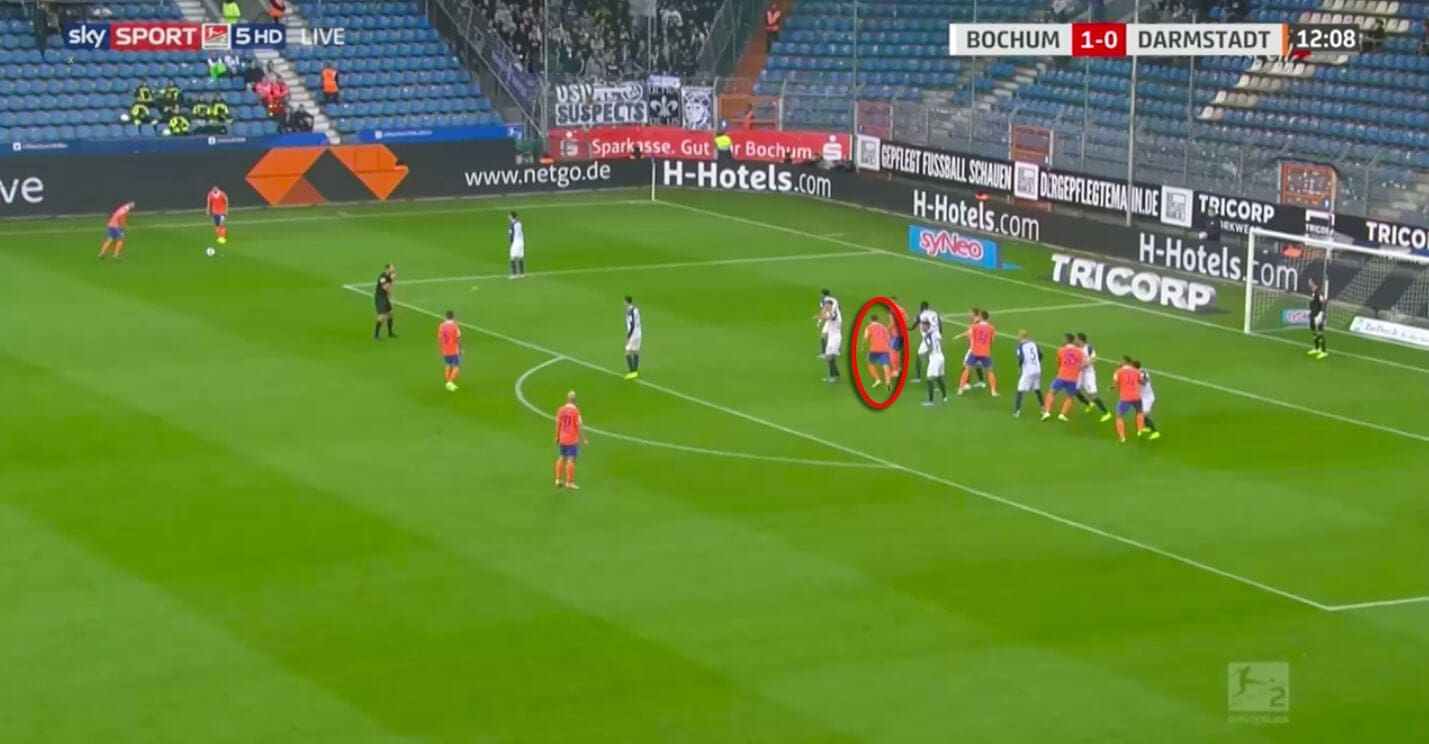
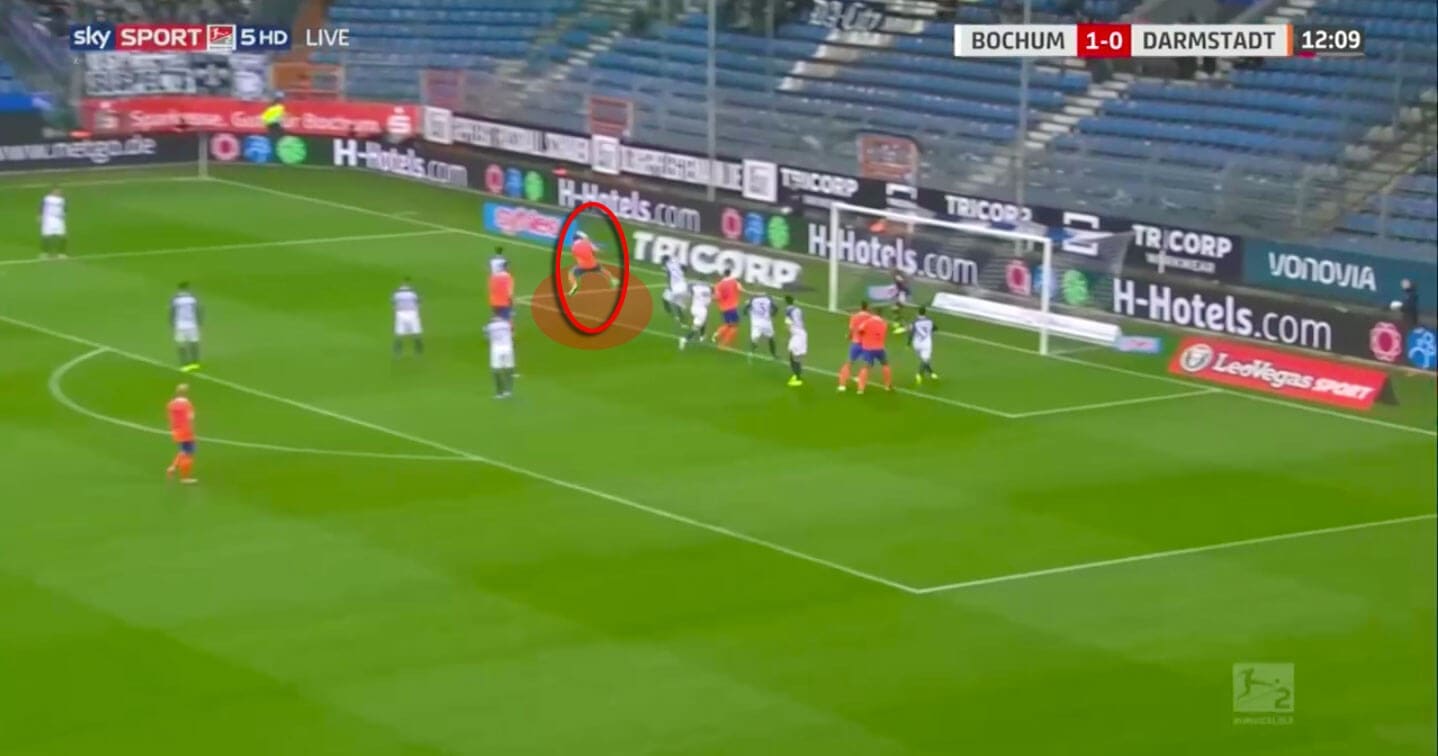
Moreover, when defending within the penalty area, it is important to mark the opposition attackers very tight. The closer to the goal, the closer defenders need to be with their direct opponents as it gets easier to score even with the first touch. To prevent this, only tight marking will disturb the opposition attackers enough. Bochum’s defenders, however, often lose sight of the opposition attackers while watching the ball for too long.
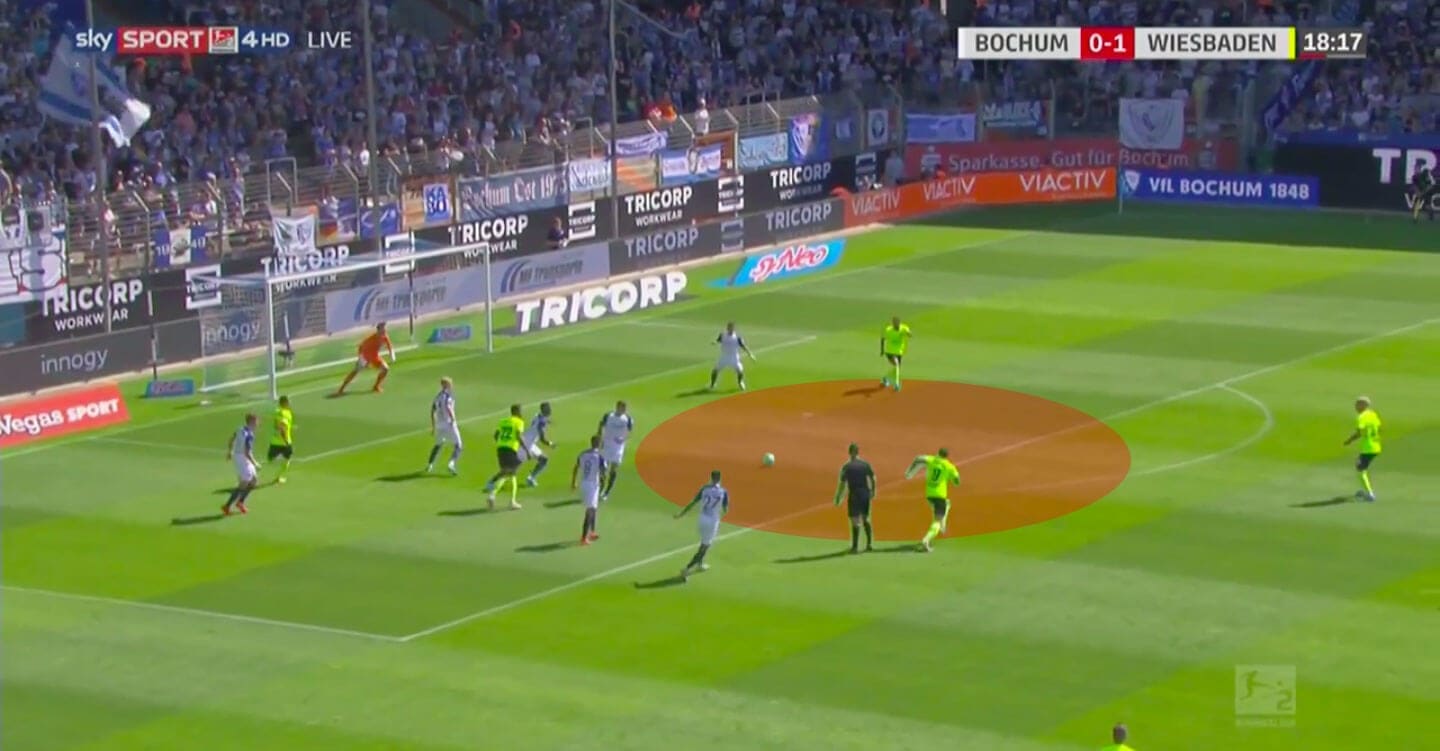
In these situations, their opponents use blind-side runs to steal away from the defender and finish unimpaired.
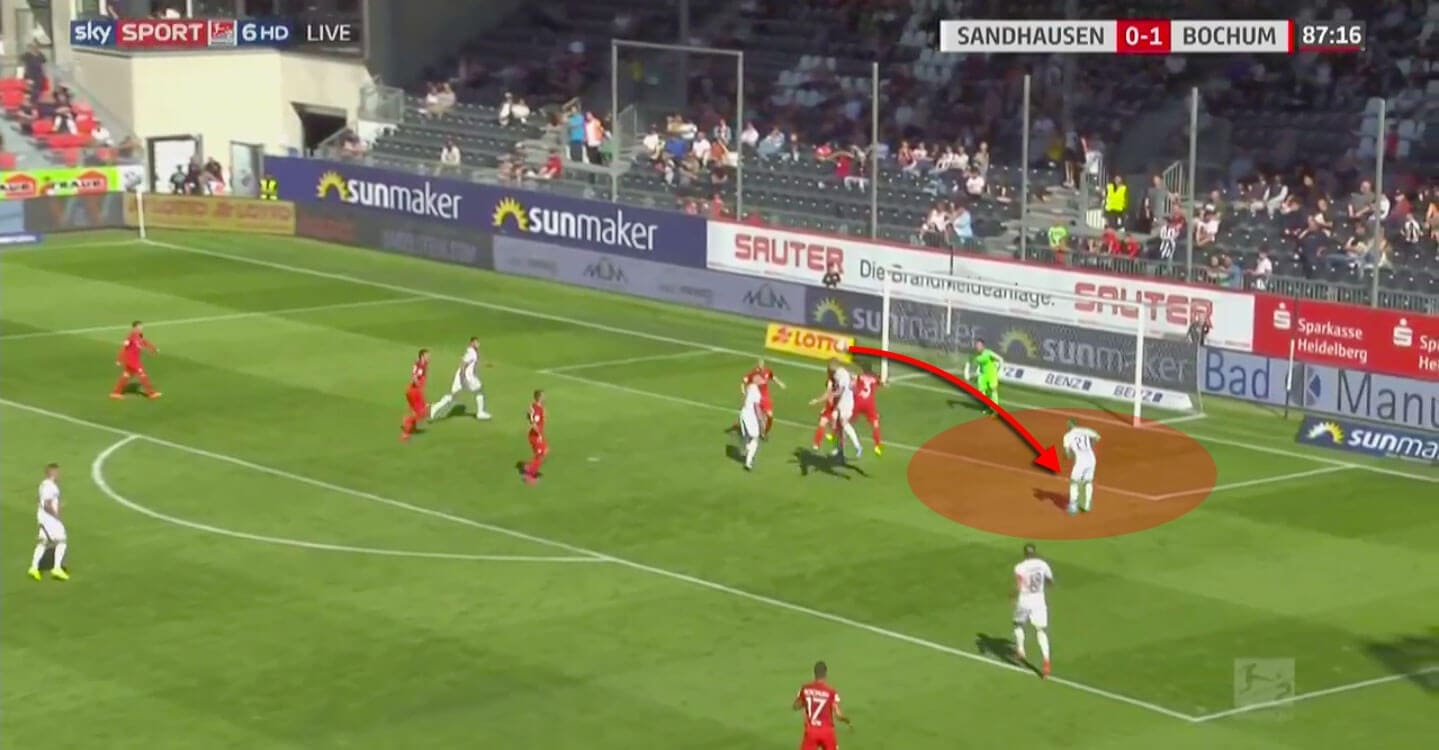
Without much pressure, attackers are obviously more likely to score.
Conclusion
To sum up, the discrepancy of Bochum’s xGA value and the actual number of conceded goals is too big to be only caused by bad luck. Our scout report on Bochum displayed that their defensive tactics entail some risks.
The tactical issues in defence, revealed in our analysis, lead to open spaces for opposition attackers. The failure to stay tight with opposition attackers led to better scoring chances and therewith more goals against Bochum.
New head coach Reis could not solve Bochum’s defensive issues so far. However, he did not have much time yet and will probably address and hopefully solve these problems in the near future.

If you love tactical analysis, then you’ll love the digital magazines from totalfootballanalysis.com – a guaranteed 100+ pages of pure tactical analysis covering topics from the Premier League, Serie A, La Liga, Bundesliga and many, many more. Buy your copy of the October issue for just ₤4.99 here




Comments